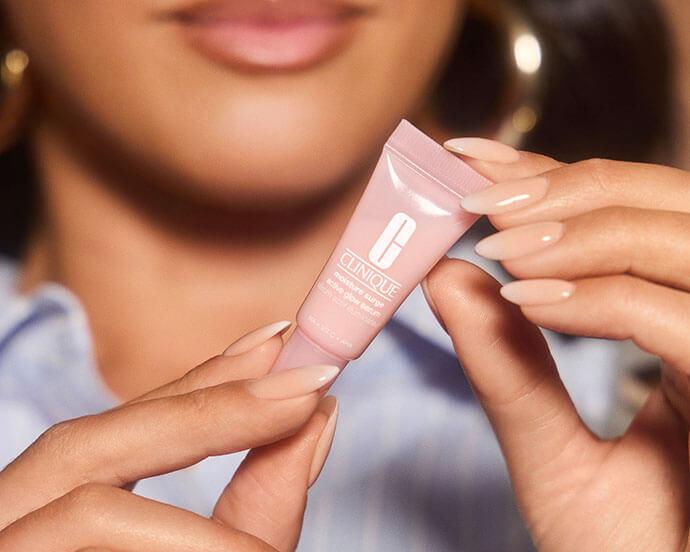AHAs, BHAs, PHAs—Which Acids Does Your Skin Actually Need?



Dahvi Shira


The word “acid” sounds intense at first, but when it comes to skincare, these are typically chemical exfoliants that, when applied properly to the skin’s surface, can make powerful moves for the skin. In fact, most acids are recommended even for sensitive skin, as long as they’re dosed properly. Interestingly, acids come in the form of cleansers, chemical peels, toners, acne treatments, serums—pretty much all types of skincare products and formulations. They address an array of skincare concerns and skin conditions, including age spots, melasma, rosacea, acne scars, discoloration, dry skin, sun damage, anti-aging, and hyperpigmentation. Theyeven help with cell turnover. So again, even though the word sounds dramatic, skincare acids are highly recommended by dermatologists. It’s just important not to overdo them, because skin sensitivity will ensue, regardless of your skin type.
As we always point out, everyone’s skin is different—so it’s best to consult with an expert before using any active ingredients. You want to ensure your skin isn’t reactive to a particular acid and that you’re applying it correctly and using it for the correct intended purpose. We spoke to two leading experts who break down everything you need to know about acids for skin. So instead of freaking out, scroll below for all the answers and to find out what type of acid is recommended for your skincare routine to help target your skin concerns.


It's about glam time you treated yourself.
MEET THE EXPERT
Alicia Mckeithan is a BIOLOGIQUE RECHERCHE esthetician based in Los Angeles.
Harold Lancer, MD, is a celebrity dermatologist and founder of LANCER SKINCARE.
What Are Acids in Skincare?
You’ve probably heard of AHAs and BHAs. Those stand for alpha hydroxy acids and beta hydroxy acids—the two main families of acids. There are also PHAs (polyhydroxy acids), which are less commonly discussed.
“Acids are chemical exfoliants that help gently dissolve skin cells to brighten overall skin tone and improve conditions such as acne,” explains BIOLOGIQUE RECHERCHE esthetician Alicia Mckeithan. “AHAs are naturally derived from fruits, nuts, milk, and even sugar, whereas BHAs are derived from willow bark (trees) and meadowsweet (herb), which also can be found in aspirin.
For a cult-classic acid-packed treat, we (and Mckeithan) recommend the BIOLOGIQUE RECHERCHE Lotion P50, which comes in different levels based on where your skin is at. If you’re looking for something a little more entry-level, we recommend the universally beloved GLOW RECIPE Watermelon Glow AHA Night Treatment. It gently exfoliates during sleep, helping to leave you with visibly brightened and hydrated skin in the morning. And if you have acne-prone skin, we love the easy NIP+FAB Salicylic Fix Clay Mask, which kicks clogged pores and breakouts to the curb with just a few applications per week.
Funny enough, while hyaluronic acid is one of the most popular acids (and skincare ingredients, period) on the market, it doesn’t perform the way these typical ones do. “It nourishes and hydrates, while AHAs and BHAs detox and exfoliate,” Mckeithan shares.
How to Use Acids in Your Skincare?
1. Take a “Less Is More” Approach
Even if you don’t feel anything off the bat, don’t push your skin.
“Too much at once can lead to a reaction such as redness, sensitivity, and even dryness,” Mckeithan says. “Always wear an SPF when using acids, as [acids] can make the skin more sensitive to the sun, causing pigmentation and speeding up the aging process. I recommend an SPF 30 or higher with the golden rule of applying every two hours.”
If you’re stuck on which SPF to use, we’re loyalists to the iconic SUPERGOOP! Unseen Sunscreen SPF 40. After all, 6,610 five-star reviews can’t be wrong. It protects the skin from harsh UV rays with an unscented, weightless formula that goes on invisible and leaves behind a velvety-smooth finish.
2. Combine AHAs and BHAs
“AHAs and BHAs can’t be used together,” said anyone who didn’t know any better. Luckily, we’re here with the skincare truth.
“Both are a dynamic duo that can give you great results, rather than just being used on their own,” Mckeithan says. “This is due to different ingredient properties and benefits.”
3. Stop Using If It’s Truly Burning
Obviously it’s normal to feel a sensation when active ingredients are applied to the skin, but no, you don’t want to burn your face off. If that sensation feels a little too intense, that means it is.
“‘If it’s not burning then it’s not working’ is false,” Mckeithan says. “Burning is a sign of irritation, aka skin damage. You shouldn’t use AHAs and BHA daily. Proper, low moderations when exfoliating daily can help get rid of the visible appearance of fine lines, pigmentation, and wrinkles. This is done by removing the dull top layer of dead skin and free radicals that cloud complexion and often compromise the skin barrier.”
She notes that if you have acne-prone skin, exfoliating a little more frequently can help clear out pores and minimize their appearance.
4. Start Slow
While we encourage mixing AHAs and BHAs, and multiple products in general (when appropriate), it’s never wise to dive right in all at once.
“Starting slowly is key,” LANCER SKINCARE founder Harold Lancer, MD says. “It’s essential to incorporate them one at a time in lower concentrations to allow the skin to acclimate.”
5. Use Only as Needed
It’s easy to get acid-happy (we’ve been there!)—especially if you’re newer to using them and you’re not sure exactly how they work. But not every acid belongs on every skin type.
“They should also be used based on concern and skin tolerance,” Dr. Lancer warns. “For example, if someone is blemish-prone and sensitive, I’d recommend gentle AHAs such as lactic, salicylic, or mandelic. Another consideration is not to overuse them. Only one to three times per week to start with is sufficient.”
A cult favorite we stand by that aligns with Dr. Lancer’s description is the CLINIQUE Moisture Surge™ Active Glow Serum. Powered by lactic acid, vitamin C, and hyaluronic acid, it helps exfoliate, hydrate, and brighten all in one milky layer.
The Most Popular Acids for Skin
As we mentioned, each acid has a different purpose and derivative. No two are the same. So below, our two experts broke down the eight most commonly used acids, what they do for the skin, and where they come from. So check your skincare shelf—you’ll probably spot a few of these on the labels.
Salicylic Acid
BHA
Unclogs pores
Treats acne and breakouts
Oil soluble, meaning it can penetrate sebum clogged pores
Anti-inflammatory properties
Glycolic Acid
AHA
Made from sugar
Exfoliates dead skin
Helps reduce fine lines and wrinkles
Helps improve tone and texture
Lactic Acid
AHA
Made from milk
Gentle exfoliant
Hydrating
Helps improve skin texture
Helps brighten
Hyaluronic Acid
Neither an AHA or BHA
Does not exfoliate
Hydrates and plumps the skin
Helps attract and retain moisture
Ascorbic Acid
Neither an AHA or BHA
Also known as vitamin C
Antioxidant properties
Anti-aging benefits
Helps brighten and fade dark spots
Stimulates collage
Citric Acid
AHA
Made from oranges and lemons
Antioxidant used for exfoliation
Helps even out skin tone and soften and smooth the skin
Malic Acid
AHA
Made from apples
Gentle exfoliant
Helps leave skin brighter and more even
Mandelic Acid
AHA
Made from bitter almonds
Exfoliant that helps remove dead skin cells and acne-causing bacteria
Helps reduce the appearance of fine lines and wrinkles
Final Thoughts
Acids might sound intimidating, but they’re actually some of the most effective (and derm-approved) ingredients you can add to your skincare routine—if you use them wisely. Whether you’re trying to fade dark spots, fight breakouts, or level up your glow, there’s a targeted acid to help you get there. The key is to start slow, listen to your skin, and tailor your routine to your skin’s unique needs.
Still unsure where to begin? Start with something gentle and multitasking, like the CLINIQUE Moisture Surge™ Active Glow Serum—it’s a member favorite for a reason. And no matter which acid you’re trying, always pair it with SPF (seriously, always). Your future skin will thank you.
Want to keep the glow going? Check out these expert-approved guides next:
Liked this post? Share!
Related Stories


Skin
The New Year Is the Perfect Time to Get Ahead of Inflammaging
Published on Dec 15, 2025 • 8 min read


Skin
How to Adjust Your Skincare Routine for Mature Skin in the Winter
Published on Dec 4, 2025 • 7 min read


Skin
We Grabbed Our Crystal Ball and Found These 6 Skincare Predictions for 2025
Published on Dec 10, 2024 • 7 min read


Skin
10 Thanksgiving Foods That Will Have Your Skin Coming Back for Seconds
Published on Oct 15, 2025 • 7 min read


Skin
Skin Texture 101: Your Guide to the Types of Skin Texture and How to Care for Them
Published on Oct 8, 2025 • 14 min read


Skin
Get Rid of Sebaceous Filaments for Good by Following These Tips From Derms
Published on Sep 30, 2025 • 12 min read


Skin
Dry Skin Friendly Exfoliators That Actually Work
Published on Sep 27, 2025 • 9 min read


Skin
Why Drunk Elephant Will Always Be at the Top of Our Beauty Wishlist
Published on Sep 10, 2025 • 6 min read


Beauty Picked Just for You
Get 5 products worth up to $70
Plus exclusive access to epic deals up to 80% off
Starting at just $14/month. Cancel anytime.